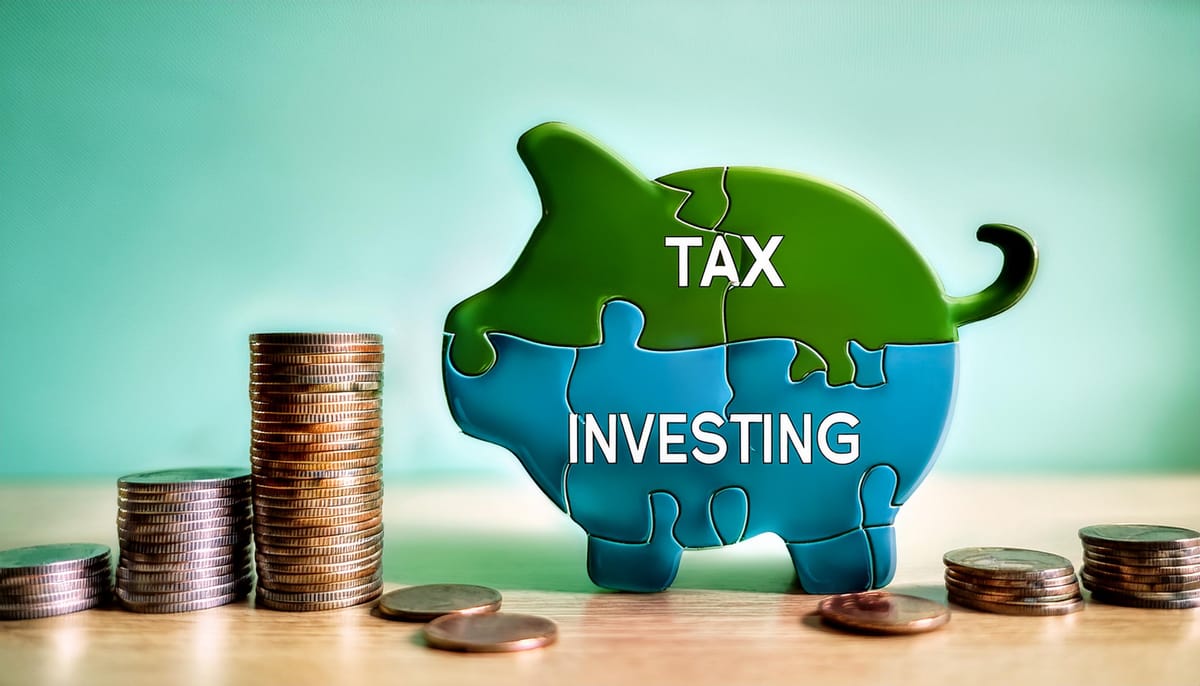What is an ETF and How Does it Work?
At its core, an ETF is a type of investment fund that trades on stock exchanges, much like individual stocks. Think of it as a basket filled with various securities - stocks, bonds, commodities, or a mix of these. This basket is carefully curated to track a specific index, sector, commodity, or other assets. Some of the most popular ETFs track well-known indices like the S&P 500, offering investors broad market exposure.
The beauty of ETF lies in their ability to offer instant diversification. Instead of painstakingly selecting individual stocks, you can buy a slice of the entire market with a single transaction, acquiring the same underlying securities for a fraction of the cost. It's like ordering a sampler platter at a restaurant instead of committing to just one dish.
Types of ETFs: Index, Sector, Bond, and International ETFs
ETFs tend to come in many flavors and multiple asset classes, catering to different investment appetites and strategies, even offering inverse ETFs, serving a broad range of investors. Let's break down some of the most common types in financial markets:
- Index ETF: These are the vanilla ice cream of the Index ETF world - classic and popular. They track broad market indexes like the S&P 500 or Nasdaq, offering an alternative for index fund.
- Sector ETF: Focused on specific industries, these allow you to bet on sectors you believe will outperform, like technology or healthcare.
- Bond ETF: For those seeking income or stability, these ETFs invest in various types of bonds with higher liquidity, unlike bond funds.
- Commodity ETF: Want exposure to precious metals, oil, natural resources, or agricultural products? These commodity ETFs have got you covered. You can access Gold ETFs and Commodity ETF, with lower transaction fees than a mutual fund. Some commodity ETFs use futures contracts to gain exposure to the underlying asset.
- International ETF: These offer a passport to global markets, allowing you to invest in foreign countries or regions.
- Thematic ETF: These focus on specific themes or trends, like clean energy, leveraged ETF, currency ETF or artificial intelligence.
Each type of exchange traded fund serves a unique purpose in a portfolio, much like different tools in a toolbox. The key is selecting the right ones for your financial goals and risk tolerance.
ETF Advantages and Disadvantages: Is an ETF Better than a Stock?
ETF have gained immense popularity over mutual funds, and for good reason. Let's dive into the key advantages that make ETFs a favorite among both novice, experienced investors, and fund manager.
Diversification: What It Is and Why It Matters in ETF Investing
The exchange traded funds options are vast, and a low minimum investment is helpful. Diversification is the cornerstone of sound investing, and most ETFs excel in this department.
By investing in an ETF, you're essentially buying a slice of numerous companies, foreign markets, or assets in one go. This spread of investments helps mitigate risk - if one company in the ETF performs poorly, it's balanced out by the others.

Learn more about diversification and improve your return.
Cost-Effectiveness: More Bang for Your Buck
ETF typically boast lower management fees compared to actively managed mutual funds. This means more of your money is actually invested rather than eaten up by fees and fund managers and investment advisor.
It's like flying economy class but getting a business class experience - you reach the same destination (your financial goals) but at a fraction of the cost of mutual funds.

Master cost-effective investing with ETF. Learn strategies to maximize returns while minimizing expenses. Your guide to smarter, more profitable investing.
Liquidity: Unlike Mutual Funds
Unlike mutual funds that trade only once a day, ETF can be bought and sold throughout the trading day at market prices. This liquidity gives investors the flexibility to react quickly to market changes or adjust their portfolio as needed.
Liquidity risks related to passive ETFs and mutual funds are not the same. Index mutual fund has higher net expense ratios, while the ETF provider focuses on lower fees and higher net asset value, boosting liquidity.

Explore mutual funds, their types, benefits, and how they work. Learn to make informed investment decisions with our comprehensive guide.
Transparency: No Smoke and Mirrors
Most ETF disclose their holdings daily, allowing investors to know exactly what they own. This transparency is like having a clear glass pantry - you can always see what's inside, unlike many mutual funds.

Explore financial instrument transparency, its impact on markets, and how it's shaping the future of investing. Expert insights and analysis.
Tax Efficiency: Keeping More in Your Pocket
Due to their structure, Exchange Traded Funds generally generate fewer capital gains distributions compared to mutual funds. This can lead to tax benefits on a lower tax bill, especially for investors in higher tax brackets.

Master tax-efficient investing strategies to maximize your after-tax returns. Learn about asset location, tax-loss harvesting, and more.
ETFs in Action: Building Your Investment Strategy
Now that we've covered the basics, let's explore how ETF can be used to construct and manage an investment portfolio.
Asset Allocation with ETFs: Building a Balanced Portfolio
ETF offers an efficient way to implement asset allocation strategies. Here's a simple example of how you might use ETF to build a diversified portfolio:
| Asset Class | ETF Type | Allocation | Purpose |
|---|---|---|---|
| Stocks | Broad Market ETF | 60% | Growth |
| Bonds | Bond ETF | 30% | Income & Stability |
| Real Estate | REIT ETF | 5% | Diversification |
| Commodities | Gold ETF | 5% | Inflation Hedge |
This table illustrates how ETF can be used to create a balanced portfolio across different asset classes. The beauty of this approach is its simplicity and flexibility - you can easily adjust your allocation as your financial situation or market conditions change.

Learn how asset allocation balances risk and reward in investing. Discover strategies to diversify your portfolio for long-term financial success.
Dollar-Cost Averaging: Smooth Sailing Through Market Waves
ETF are perfectly suited for dollar-cost averaging, a strategy where you invest a fixed amount regularly, regardless of market conditions. This approach can help smooth out the impact of market volatility over time.
For example, you might set up an automatic monthly investment of $500 into a broad market ETF. In months when the market is down, your $500 will buy more shares, and in months when it's up, it will buy fewer. Over time, this can potentially lower your average cost per share.

Learn how Dollar-Cost Averaging can help you invest smarter, reduce risk, and potentially boost returns. Discover the power of consistency.
Sector Rotation: Riding the Economic Waves
For more active investors, sector ETF provide a tool for implementing sector rotation strategies. This involves shifting investments between different sectors of the economy based on where you believe we are in the economic cycle.
For instance, during an economic recovery, you might increase allocation to cyclical sectors like consumer discretionary or industrials using sector-specific ETF. As the economy matures, you could rotate into more defensive sectors like utilities or consumer staples.

Master sector rotation strategies to potentially enhance investment returns. Learn key economic indicators and implementation tips.
Navigating the ETF Landscape: Tips for Success
While ETFs offer numerous advantages, successful investing still requires careful consideration and strategy. Here are some tips to help you navigate the ETF shares landscape:
- Do Your Homework: Do Your Homework: Before investing in an ETF shares or Index Funds, understand what it tracks, its expense ratio, and how it fits into your overall investment strategy. Go beyond your investment adviser and read the summary prospectus.
- Consider Liquidity: Some niche ETFs may have lower trading volumes, which can impact your ability to buy or sell at desired prices. Also, consider that Mutual Fund trades with much more limitations – also check its fund's assets. A good tip is to check the ETF's net asset value and if it is an actively managed ETF or not.
- Watch for Tracking Error: This is the difference between the ETF's performance and that of its underlying index. Lower tracking error is generally better. Most ETFs and mutual funds with lower fees offer a good tracking error. Actively managed funds, on the other hand, might offer a lower tracking error.
- Understand the Costs: While ETFs are generally low-cost, some may have higher expense ratios or additional costs. Always read the prospectus.
- Rebalance Regularly: Over time, your portfolio may drift from your target allocation. Regular rebalancing helps maintain your desired risk level.
ETF vs. Mutual Fund: Understanding the Nuances
When it comes to diversification, exchange traded funds (ETFs) and mutual funds both offer compelling options. Let's explore their unique characteristics.
Investment Objective and Management
Exchange traded funds (ETFs) often track index funds, mirroring specific market indices. A mutual fund can be either index funds or actively managed funds, with professionals selecting securities to outperform the market. Some index funds focus on tangible assets, providing exposure to physical commodities.
Trading and Pricing
Exchange traded funds (ETFs) trade on stock exchanges throughout the day, with market prices fluctuating based on supply and demand. The market price of an ETF can sometimes differ from its residual value. Trading volume can impact an ETF's liquidity. Mutual funds, however, are priced once daily after market close.
Costs and Efficiency
ETF options generally have lower expense ratios compared to actively managed funds. They're also often more tax-efficient due to their structure and typically lower turnover of investments held. A mutual fund may have higher costs, especially if it's actively managed. Always review the summary prospectus for detailed information on fees and expenses.
Flexibility and Accessibility
Exchange traded funds (ETFs) offer more trading flexibility, allowing investors to execute trades at current market prices during trading hours. Many brokers now offer commission-free trading for certain ETFs. Before investing, it's crucial to read the prospectus carefully for both ETFs and mutual funds. Before investing, it's crucial to read the summary prospectus carefully for both ETFs and mutual funds.
Diversification and Risk Management
Both investment vehicles provide diversification, but diversification ETFs specifically focus on spreading risk across various assets or sectors. Other funds may concentrate on specific industries or regions. Some index funds aim to replicate the performance of broad market indices.
Securities and Holdings
While ETFs and mutual funds primarily invest in stocks and bonds, they may also include other securities. The composition of these investments can vary based on the fund's objective. An exchange traded fund might focus on a specific sector or asset class.
Investor Considerations
Choosing between exchange traded fund (ETFs) and mutual funds depends on your investment goals, risk tolerance, and preference for passive or active management. Securities help from a financial advisor can guide you in aligning these investments with your long-term objectives.
Remember, whether opting for ETFs, mutual funds, or a combination, it's crucial to understand the nature of the investments held and how they fit into your overall financial strategy. Both exchange traded fund and mutual fund options can play valuable roles in a diversified portfolio.
Index Funds vs Exchange Traded Funds: Which is Better for Your Investment Strategy?
Both index funds and ETFs offer ways to invest in a diversified basket of securities, but they have key differences that can impact your investment strategy. Let's explore how these two investment vehicles compare:
ETFs trade throughout the trading day at market prices, offering intraday liquidity. In contrast, index funds are priced once at the end of each trading day, based on the net asset value (NAV) of securities held.
Both ETFs and index funds typically share the same investment objective: to track a specific market index. However, ETFs often use a replication strategy, while index funds may use sampling techniques to match the index's performance.
ETFs can be purchased for the price of a single share during any trading day, while index funds often have minimum investment requirements. Both can offer low expense ratios, but ETFs might incur brokerage fees for each trade.
ETFs generally offer better tax efficiency due to their creation/redemption process. For niche or less liquid markets like emerging markets, the investment objective might be better served by ETFs due to their intraday trading capability.
Index funds may have cash drag due to investor inflows/outflows, while ETFs can often invest fully. Index funds often offer automatic dividend reinvestment, while with ETFs, an investor's shares of dividends is typically paid in cash, requiring manual reinvestment.
ETFs offer a wider variety of investment options, including sector-specific funds, commodity funds, and even money market funds in ETF form.
Choosing between index funds and ETFs ultimately depends on your specific investment objective, trading preferences, and overall strategy. If you value intraday trading and potentially higher tax efficiency, ETFs might be your best bet. If you prefer automatic dividend reinvestment and don't need intraday trades, index funds could be the way to go. Remember, both can be excellent tools for building a diversified, low-cost portfolio aligned with your long-term investment objective.
The Future of ETFs: What's on the Horizon?
As the investment landscape evolves, so too do ETFs. Here are some trends to watch for more investment objective and add them to your ETF database:
- Thematic ETFs: Funds focused on specific themes like artificial intelligence, remote work, or climate change are gaining popularity.
- Active ETFs: While most ETFs are passive, actively managed ETFs are becoming more common, offering a blend of ETF benefits with active management.
- ESG ETFs: Environmental, Social, and Governance (ESG) focused ETFs are on the rise, catering to investors who want to align their portfolios with their values.
- Crypto ETFs: While still facing regulatory hurdles in some countries, cryptocurrency ETFs are an area of growing interest in the other asset classes basket.
Frequently Asked Questions
Q1: Are ETF suitable for beginner investors? A: Yes, ETF can be excellent for beginners due to their simplicity, diversification, and typically lower costs compared to other investment vehicles.
Q2: How do ETF fees compare to mutual fund fees? A: ETF generally have lower expense ratios than actively managed mutual funds, though this can vary. Always compare the specific funds you're considering.
Q3: Can I lose all my money investing in ETF? A: While all investments carry risk, it's highly unlikely to lose all your money in a diversified ETF. However, the value of your investment can fluctuate based on market conditions.
Q4: How often should I rebalance my ETF portfolio? A: Most financial advisors recommend rebalancing annually or semi-annually, or when your allocation drifts significantly from your target.
Q5: Are dividends from ETF taxed differently than stock dividends? A: ETF dividends are generally taxed similarly to stock dividends. However, the tax efficiency of ETFs can lead to fewer capital gains distributions, potentially resulting in a lower overall tax bill. Always read the summary prospectus before investing.
Conclusion: Harnessing the Power of ETFs
ETFs have revolutionized the investment landscape, offering a powerful tool for building diversified portfolios at a low cost. Whether you're saving for retirement, building wealth, or pursuing specific investment strategies, ETFs provide a flexible and accessible way to achieve your financial goals.
As with any investment, it's crucial to align your ETF choices with your overall financial strategy and risk tolerance. Consider consulting with a financial advisor to determine how ETFs can best fit into your investment plan.
Ready to dive deeper into the world of investing? Explore our other articles on portfolio management, risk assessment, and retirement planning to build a comprehensive investment strategy. Or, sign up for our newsletter to stay updated on the latest financial insights and investment trends.





